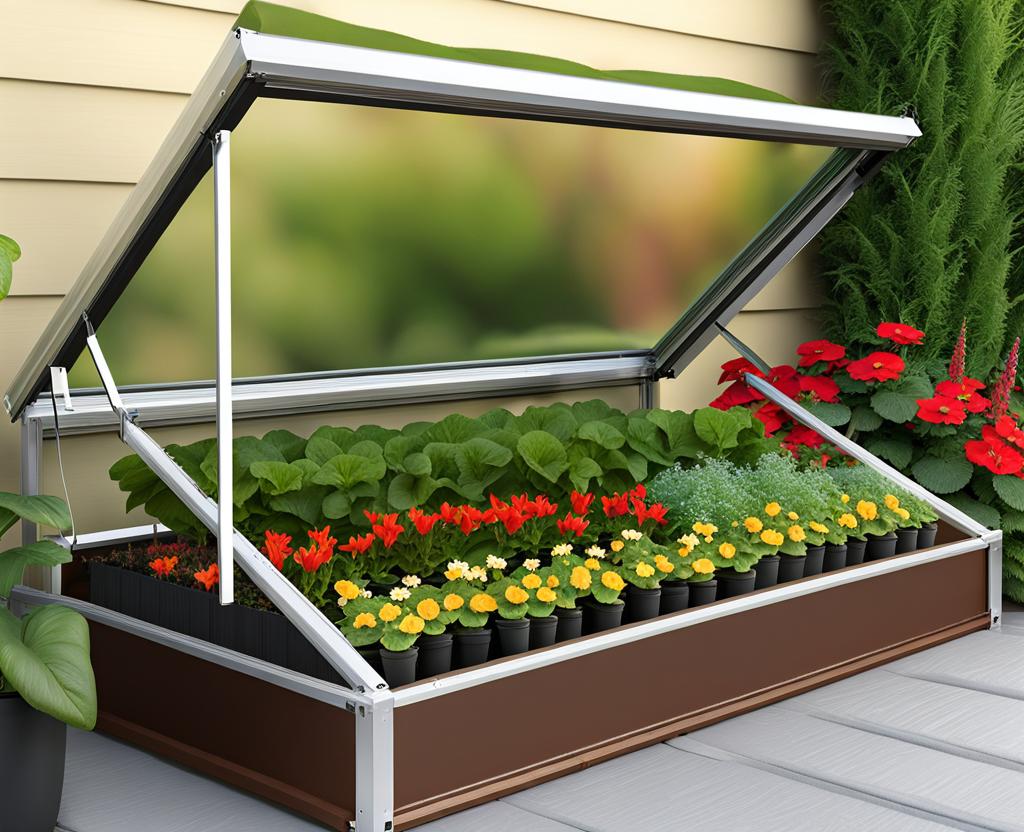As a passionate gardener in Zone 5, I understand the frustration of having a limited growing season. That’s where the magic of cold frame gardening zone 5 comes into play. Cold frames are simple yet effective structures that can extend your growing season, allowing you to enjoy fresh produce for a more extended period.
What is Cold Frame Gardening in Zone 5?
Cold frame gardening is a technique that involves using a transparent, insulated structure to create a microclimate suitable for growing plants during the colder months. In Zone 5, where temperatures can dip below freezing, cold frames provide a protective barrier against harsh weather conditions, enabling you to start your garden earlier in spring and keep it going longer into fall.
These structures come in various shapes and sizes, from portable units made of wood and glass or plastic to permanent, built-in frames. The key feature of a cold frame is its ability to trap and retain solar heat during the day, creating a warm environment for your plants to thrive. At night, the insulated design helps maintain the warmth, shielding your plants from the chilly outdoor temperatures.

Planning Your Cold Frame Garden for Zone 5
Before diving into cold frame gardening, it’s essential to plan your setup carefully. The location of your cold frame is crucial, as it needs to receive ample sunlight throughout the day. Ideally, position it in a south or southeast-facing area, sheltered from harsh winds. This will maximize the structure’s ability to absorb and retain heat.
Next, determine the size and style of your cold frame based on your gardening goals and available space. Portable cold frames are excellent for those with limited areas or who want to move their structures around. In contrast, permanent cold frames are better suited for larger gardens or those seeking a more long-term solution.
When selecting crops for your cold frame garden, focus on hardy vegetables and greens that can withstand cooler temperatures, such as lettuce, spinach, kale, carrots, and radishes. These plants will thrive in the protected environment of your cold frame, providing you with fresh produce even when the outdoor conditions are less than ideal.
Building a Sturdy Cold Frame for Zone 5
Constructing a durable cold frame is essential for successful cold frame gardening in Zone 5. The materials you choose will impact the structure’s insulation and durability. Wood is a popular choice for the frame, as it’s sturdy and easy to work with. For the top, consider using glass or rigid plastic panels, which allow sunlight to penetrate while retaining heat.
When building your cold frame, pay close attention to insulation and ventilation. Proper insulation is crucial for maintaining a warm environment inside the structure, especially during cold nights. You can insulate the sides and bottom with materials like straw bales or rigid foam boards.
Ventilation is equally important, as it prevents overheating and moisture buildup, which can lead to disease and mold growth. Install hinged lids or vents that can be opened and closed as needed to regulate airflow and temperature.
Planting and Maintaining Your Cold Frame Garden
Once your cold frame is ready, it’s time to start planting! Prepare the soil inside the structure by mixing in nutrient-rich compost or aged manure. This will provide your plants with the essential nutrients they need to thrive.
When planting, consider the recommended spacing for each crop, as overcrowding can lead to stunted growth and disease issues. Establish a consistent watering and fertilizing schedule, as the conditions inside the cold frame can dry out faster than in an outdoor garden.
Pest and disease management are also crucial aspects of cold frame gardening. Regularly inspect your plants for signs of pests or disease, and take appropriate action promptly. Proper ventilation and maintaining a clean environment within the cold frame can help prevent many issues from arising.
Extending the Growing Season with Cold Frames
One of the primary advantages of cold frame gardening in Zone 5 is the ability to extend your growing season significantly. You can start seeds weeks or even months earlier than normal by utilizing the warm environment inside your cold frame. As the weather warms up, you can transition your seedlings to the outdoor garden, giving them a head start on the growing season.
In the fall, cold frames can also be used to overwinter hardy vegetables and plants. By protecting them from the harsh winter conditions, you can continue harvesting fresh produce well into the colder months. Implement crop rotation and succession planting strategies to maximize your yields and ensure a continuous supply of fresh vegetables.
While cold frame gardening is generally straightforward, you may encounter some common issues along the way. Overheating is a potential problem, especially on sunny days. To combat this, ensure proper ventilation by opening the lids or vents. You can also shade the cold frame with a lightweight cloth or use an automatic ventilation system for precise temperature control.
Pests can also find their way into your cold frame, so vigilance is key. Use row covers, insecticidal soaps, or other organic pest control methods to protect your plants. Additionally, maintaining a clean environment and rotating crops can help prevent pest and disease problems.
As you gain experience with cold frame gardening, consider incorporating advanced techniques to optimize your setup. Automating temperature and ventilation control can make managing your cold frame more convenient. You can also integrate your cold frames with other season extension methods, such as low tunnels or greenhouses, for even greater growing potential.
Remember, cold frame gardening in Zone 5 is an ongoing learning process. Experiment, take notes, and refine your techniques to maximize your yields and enjoy the satisfaction of fresh, homegrown produce throughout the year.

This is where you’ll find inspiration to create a stylish and beautiful dream home.